مقدمة
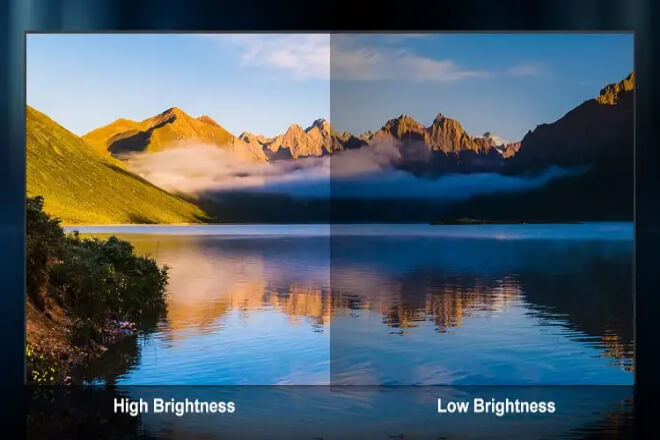
في العصر الرقمي اليوم، يعرض الصمام are everywhere, from bustling commercial streets to quiet conference rooms, from lively stages to busy roadsides.
They all play an important role. But have you ever wondered why these screens always have the right brightness at different times and environments?
جدول المحتويات
1. Why does the brightness of the LED screen need to be automatically adjusted over time?
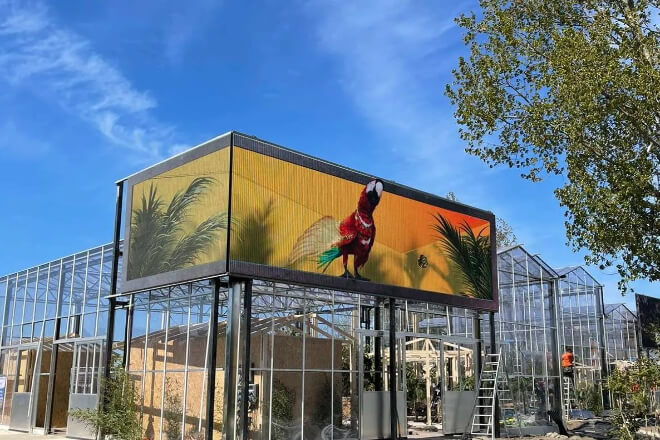
The ambient سطوع varies greatly throughout the day, which requires the brightness of the LED screen to change accordingly. The sun is very bright during the day, and the ambient brightness is high.
If the brightness of the LED screen remains unchanged, the content on the screen will appear very dark under strong light, and the audience will not be able to see the information on it clearly.
At night, the surroundings become very dark. If the LED screen is still as bright as during the day, it will be particularly dazzling, which will not only make people uncomfortable but may also affect the surrounding environment.
For example, at dusk or dawn, the light is neither strong nor weak. At this time, the brightness of the LED screen also needs to be adjusted to a suitable state so that the audience can see clearly and they can also feel comfortable.
Therefore, in order to allow the LED screen to adapt to the ambient brightness at different times, it is important to automatically adjust the brightness.
The brightness of the LED screen has a great impact on the viewing experience.
If the brightness is too high, the light emitted by the screen will make people’s eyes uncomfortable, and the eyes will be tired and dry after watching for a long time, and may even damage their eyesight.
Moreover, too high brightness will make the details and color layers on the screen worse, the picture quality will deteriorate, and the audience will not be able to see the information the screen wants to convey clearly.
Conversely, if the brightness is too low, the screen content will be blurred, and the audience will have to work hard to see it clearly, which will also make the eyes uncomfortable and reduce the viewing comfort.
In some scenes where important information needs to be displayed, such as advertising or public information release.
If the audience cannot see the screen content clearly, the information cannot be transmitted, and it may also cause misunderstandings.
Therefore, in order to allow everyone to watch comfortably, the LED screen should automatically adjust the brightness according to the ambient brightness so that the screen content can be clearly presented in various environments.
From the perspective of environmental protection, if the LED screen is too bright at night, it will cause light pollution.
This will disturb the lives of surrounding residents, affect their sleep, and cause damage to the ecosystem, such as interfering with the life patterns of birds and insects.
From the perspective of energy saving, the higher the brightness of the LED screen, the more electricity it uses.
When it is not necessary to be so bright, automatically reducing the brightness can save a lot of electricity and reduce operating costs.
For those large outdoor LED screens or LED screens that are always on, the energy-saving effect is particularly obvious.
Now, everyone advocates sustainable development. By automatically adjusting the brightness, we can reduce light pollution and save electricity.
Meet the requirements of environmental protection and energy saving, reduce carbon emissions and protect the environment.
2. What are the common ways to adjust the brightness of LED display screens?
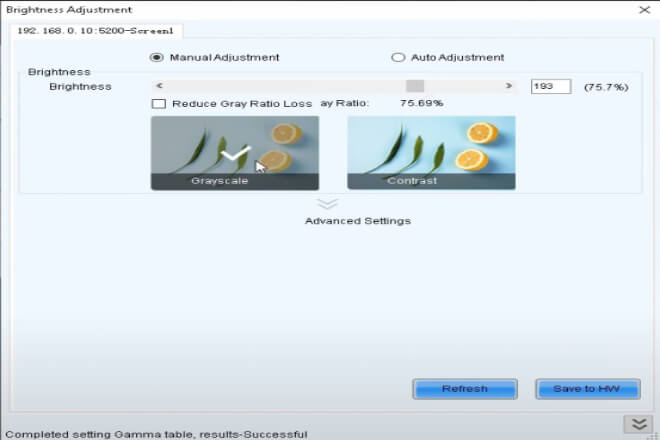
1). Manual adjustment
Manual adjustment is operated by people. Simply put, in the background system, the سطوع value is set according to different times of the day.
For example, during the day, when the sun is strong, adjust the brightness higher so that the screen content can be seen clearly; at night, adjust the brightness lower. Otherwise, it will be too dazzling.
The advantage of this method is that you can adjust the brightness according to your own ideas.
But it takes time and effort to operate. If the ambient light suddenly changes, the screen brightness will not be adjusted in time.
(Manual brightness adjustment of LED display)
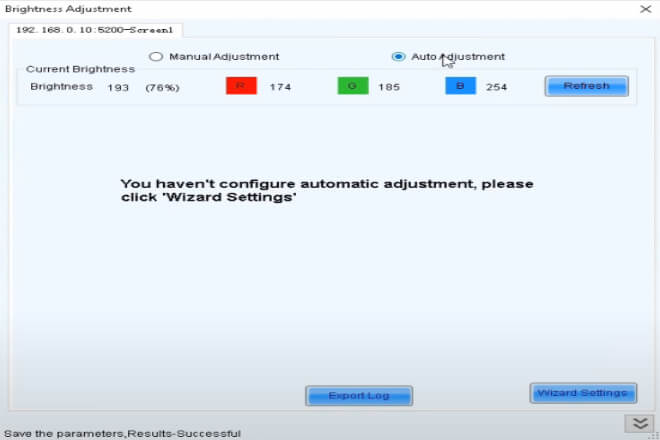
2). Automatic adjustment
Automatic adjustment is much smarter. It relies on the cooperation of ambient light sensors and control systems.
The sensor can “see” the brightness of the surrounding environment in real-time. Once the ambient brightness changes, it will transmit the information to the control system.
The control system automatically adjusts the brightness of the LED screen according to the pre-set rules.
For example, when the sunlight is strong during the day, the sensor “tells” the control system and the control system adjusts the brightness up.
When the environment is dark at night, the brightness is automatically adjusted down.
This method is convenient and worry-free, without manual worry, and the screen brightness can change with the ambient light at any time.
However, it is necessary to install sensors and control systems, which will cost more.
3). Preset program scheduling
Preset program scheduling is a bit like a “timer alarm clock.” The operator sets the brightness parameters for different time periods in the system in advance, and the system will automatically run according to this schedule.
For example, the brightness is set to 80% from 8 am to 6 pm, 50% from 6 pm to 10 pm, and 30% after 10 pm.
This method is not complicated to operate. After setting the parameters, the system can run by itself. The cost is also lower than automatic adjustment, and there is no need to install sensors.
But its disadvantage is that it is not flexible enough and can only be operated according to a set schedule.
If there are special circumstances, such as cloudy days or changes in lighting, the screen brightness cannot be adjusted in time.
3. How does the light sensing system of the LED display screen achieve automatic dimming?

The light sensing system of the LED display screen achieves automatic dimming, which is like giving the screen a “little assistant”.
So that it can automatically brighten or dim according to the surrounding light. The specific process is as follows:
1). The sensor senses the intensity of the surrounding light in real-time
The sensor in the light-sensing system is like a small “scout” who keeps staring at the surrounding light.
Whether it is sunny outside or dimly lit in the house, it can immediately detect changes in light.
For example, as soon as the sun comes out and the light becomes stronger, this sensor can “see” it immediately and then quickly tell the control system this message.
2). The control system automatically adjusts the screen brightness
After receiving the message, the control system starts to “think.” It will calculate the appropriate brightness of the screen according to the pre-set rules and then send instructions to the screen to make the screen brighter or darker.
This process is completely automatic and does not require manual operation. For example, when the sensor finds that the light has become stronger.
The control system will increase the screen brightness so that the content on the screen can be seen clearly, even in strong light.
If the light becomes darker, the screen brightness will automatically decrease so that people will not feel glare.
3). Fast response speed, precise adjustment, and user-friendly switching
This light-sensing system reacts very quickly, and it is almost instantaneous, from detecting light changes to adjusting the screen brightness.
The adjustment is very precise, and the brightness can be adjusted to the right level according to different lights.
Most importantly, the user can’t feel this change at all when looking at the screen.
For example, when walking from the house to the outside or from the sun to the house, the screen brightness will automatically and smoothly adjust.
Making people feel comfortable looking at the screen all the time, and they will not feel that it suddenly becomes brighter or darker.
4. Technical standards and recommended values for LED screen brightness adjustment

1). شاشة LED خارجية
1.1). Daytime outdoor:
5000~7000nits. During the day, the sun is strong, and if the outdoor LED screen is not bright enough.
The picture will look like it is covered with a layer of dust, and nothing can be seen clearly.
So, you have to adjust the brightness to make the content on the screen clear and eye-catching.
1.2). Outdoor at night:
1000~3000nits. It is dark outside at night. If the LED screen is as bright as during the day, it will be too dazzling.
Not only will it be uncomfortable for you to look at it, but it will also easily affect the people around you.
So, you have to lower the brightness so that you can see the picture clearly without dazzling your eyes.
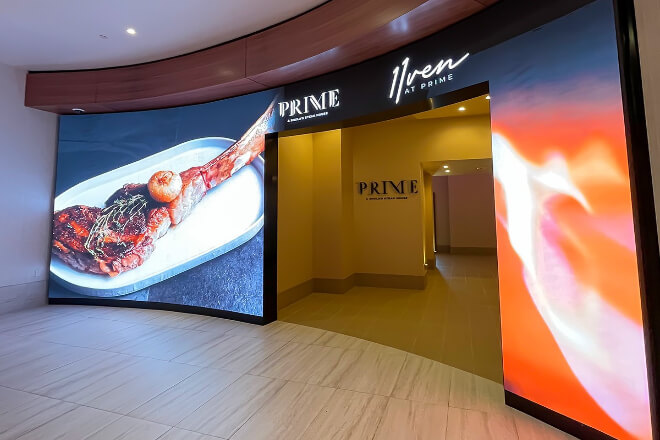
2). شاشة LED داخلية
2.1). Ordinary indoor:
600~1500nits. Like the LED screens in our usual offices, classrooms, and مراكز التسوق, this brightness is quite suitable.
It can ensure that everyone can see clearly without making the eyes feel uncomfortable.
2.2). Special indoor:
Some places have high requirements for picture effects, such as studios and high-end exhibition halls.
The brightness may be adjusted slightly higher according to specific needs, but generally, it will not exceed 1500nits.
5. Brightness control strategy of LED display screens in different application scenarios

1). LED advertising screens in مراكز التسوق
The brightness of LED advertising screens in shopping malls should be just right.
Because the light in shopping malls is quite complicated and people come and go, if the screen is too bright, customers will feel uncomfortable.
If it is too dark, the advertising content cannot be seen clearly. Generally speaking, it is quite appropriate to adjust the brightness to about 1000cd/m².
Moreover, the screens in shopping malls also pay attention to energy saving and environmental protection.
Now, many screens are equipped with light sensors that can “feel” the changes in the surrounding light.
When the light is bright, the screen is slightly brighter; when the light is dark, it is dimmed.
This can ensure that the advertising content is clear and saves electricity, killing two birds with one stone.
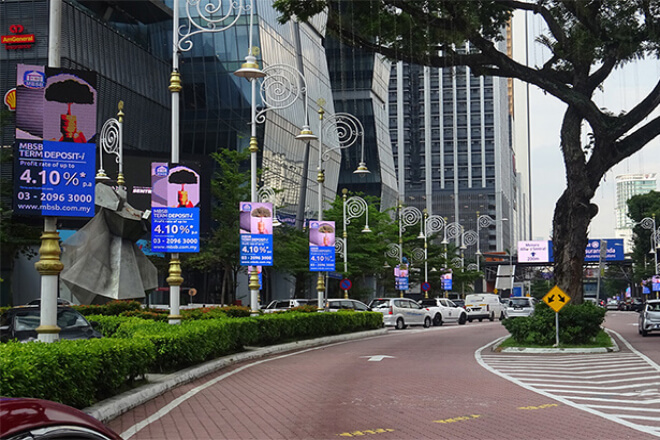
2). Roadside pole LED screen
The brightness control of the road pole LED screen is particularly critical.
During the day, the light on the road is sufficient, and the screen brightness must be high enough, at least 2000cd/m² so that pedestrians and drivers can see the content on it clearly.
But at night, if the screen is still so bright, it will dazzle the driver’s eyes and easily cause danger. Therefore, at night, you have to lower the brightness by about 300cd/m².
Now, some smart street light pole gateways can automatically adjust the screen brightness according to time.
For example, one brightness during the day, one brightness at night, and special brightness settings for holidays, so you don’t have to adjust it manually every time, which is very convenient.

3). Performance LED display on منصة
The LED screen on the stage is more particular, and it has to “dance” with the stage lights.
During the performance, the lights on the stage are bright and dim, and the screen brightness must also change accordingly.
For example, when the lights on the stage are dimmed to create a romantic atmosphere, the screen brightness must be lowered a little to focus the audience’s attention on the stage.
If the lights are on, the screen brightness must also be increased to ensure a clear picture.
Now, some stage screens use high technology, which can automatically adjust the brightness according to the changes in the lights and can also switch accurately according to the needs of the plot, making the performance effect better.
6. What should I pay attention to when installing the automatic dimming system of the LED display?

When installing the automatic dimming system of the LED display, there are a few points to pay attention to so as to ensure that the system can work normally and achieve the effect of automatic dimming.
1). Select the light sensing module
First, the light sensing module should be selected well. It is like installing a pair of “eyes” on the screen.
These “eyes” must be sensitive and can quickly detect changes in light.
It must also be stable and cannot “go on strike” at any time. If you choose a light-sensing module of poor quality, it may react slowly when the light changes.
Or simply do not react, then automatic dimming becomes an empty talk.
Therefore, you must choose a light-sensing module with high sensitivity and strong stability so that the screen can adjust the brightness in time according to the changes in light.
2). Installation position
Secondly, the installation position of the light sensing module is also critical. It cannot be blocked by anything, otherwise it will be like a blindfolded eye and cannot perceive the real light situation.
Moreover, it must be installed in a place that is close to the real ambient brightness. For example, if the light-sensing module is installed in the shadow of the screen.
Near other light sources, the light intensity it perceives will be inaccurate, and the brightness adjustment of the screen will also be problematic.
Therefore, find an open position that can truly reflect the surrounding light to install the light-sensing module.
3). Control system
Finally, the control system is also very important. The control system is like a “brain,” and it must be able to support the dual-strategy adjustment of “time + light perception” at the same time.
That is, it can adjust the brightness according to time, such as one brightness during the day and one brightness at night.
At the same time, it can also adjust the brightness according to the light intensity information transmitted by the light-sensing module.
In this way, the brightness adjustment of the screen can be more flexible and accurate.
If the control system can only be adjusted according to time or only according to light perception, then in some special cases.
For example, on cloudy days or when the light changes suddenly, the brightness of the screen may not be adjusted well, affecting the viewing effect.
7. الخاتمة
Through today’s sharing, we understand the principles, technical standards and installation points of the automatic dimming system of LED display screens.
Behind these seemingly simple screens, there are actually complex technologies and careful designs.
وأخيرًا، إذا كنت تريد معرفة المزيد عن شاشات العرض LED، الرجاء التواصل معنا.
